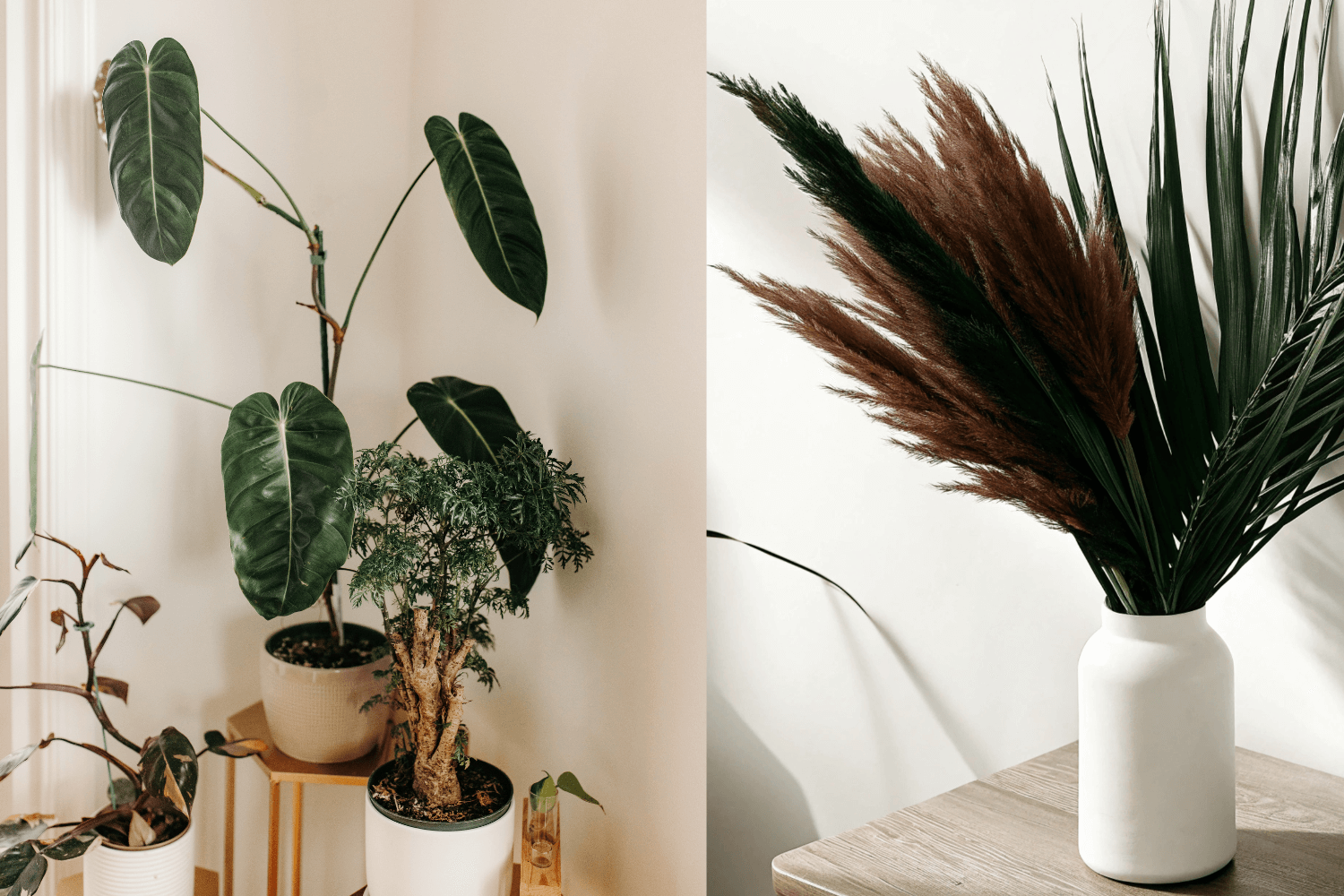General
The Environmental Impact of Real vs. Artificial Plants: Which One is Greener? 🌍🌱

In a world where environmental concerns are growing every day, more and more of us are looking for eco-friendly solutions in every aspect of our lives — including our choice of plants. Whether you’re decorating your home, office, or garden, choosing between real and artificial plants has become a decision that weighs on many people’s minds.
While artificial plants can be low-maintenance and visually appealing, real plants have their own set of environmental benefits that are often overlooked. In this blog, we’ll compare the sustainability, waste, and carbon footprint of both real and artificial plants, helping you make an informed decision that’s better for your home and the planet.
🌱 Real Plants: The Natural Choice for a Greener World
Why Real Plants are Environmentally Friendly:
- Biodegradable: Unlike artificial plants, real plants are made from natural materials and are completely biodegradable. If disposed of, they won’t contribute to plastic waste.
- Air Purification: Real plants absorb carbon dioxide and release oxygen, improving the quality of air indoors. Studies show that houseplants can help reduce air toxins like formaldehyde, benzene, and trichloroethylene.
- Carbon Sequestration: Real plants help offset carbon emissions by acting as natural carbon sinks, absorbing carbon from the atmosphere as they grow.
Real-World Examples of Real Plant Benefits:
- Indoor Air Quality: NASA’s Clean Air Study revealed that houseplants can purify air by up to 87% in 24 hours. Plants like snake plants and peace lilies are top choices for improving indoor air quality.
- Oxygen Production: During photosynthesis, plants absorb carbon dioxide and release oxygen, which helps to maintain a healthy indoor atmosphere.
The Downside:
- Water Consumption: While real plants do wonders for the environment, they need water. Excessive water usage can be an issue in areas with droughts, but many drought-tolerant plants can help minimise this problem.
- Maintenance: Unlike artificial plants, real plants require maintenance such as watering, pruning, and occasional re-potting.
🚫 Artificial Plants: A Convenient, but Costly Option
While they might look good on Instagram and require zero maintenance, artificial plants come with their own set of environmental challenges.
Why Artificial Plants Aren’t So Green:
- Plastic Waste: Most artificial plants are made from plastic, which is non-biodegradable. Over time, they break down into microplastics, which contribute to environmental pollution and harm wildlife.
- Carbon Footprint: The manufacturing of artificial plants involves the use of synthetic materials like PVC and polyester, which are derived from petroleum. This results in a higher carbon footprint compared to the production of real plants.
- Non-Recyclable: Unlike natural plants, most artificial plants are not recyclable. Once they reach the end of their life, they often end up in landfills, where they persist for hundreds of years.
The Manufacturing Process of Artificial Plants:
- Energy-Intensive: The process of making artificial plants involves energy-intensive methods, using plastics and dyes that are harmful to the environment.
- Plastic Waste: Studies show that around 8 million tonnes of plastic waste enter the oceans each year, much of which consists of products like plastic flowers and plants.
⚖️ The Environmental Trade-Offs: Real vs. Artificial Plants
Sustainability Comparison:
- Real Plants:
- Made from natural, renewable resources.
- Support biodiversity and ecosystems.
- Offer air quality benefits and carbon sequestration.
- Artificial Plants:
- Made from non-renewable, synthetic materials.
- Add to plastic waste in landfills.
- No direct environmental benefit but have a longer shelf-life and zero maintenance.
🌍 Carbon Footprint: Real vs. Artificial
| Plant Type | Carbon Footprint | Biodegradability | Water Consumption |
| Real Plants | Low (carbon sequestration) | Biodegradable | Moderate (depending on the plant) |
| Artificial Plants | High (manufacturing & transportation) | Non-biodegradable | None (no water needed) |
🏡 How to Make the Greener Choice for Your Home
While both real and artificial plants have their pros and cons, there are ways to make your home greener, no matter which option you choose.
Tips for Choosing Greener Plants:
- Go for Low-Maintenance Real Plants: Opt for plants that require minimal water and care, such as succulents, cacti, or air plants.
- Choose Sustainable Artificial Plants: If you opt for artificial plants, look for those made from more sustainable materials like recycled plastics.
- Repurpose Old Artificial Plants: Instead of tossing your old artificial plants, try upcycling them into new decorations or donate them to a local school or community centre.
🌟 Conclusion: Which One Is Greener?
So, when it comes to the environment, real plants come out on top in terms of their positive impact. They are biodegradable, contribute to cleaner air, and help fight climate change by sequestering carbon. On the other hand, artificial plants might be more convenient, but they contribute to plastic waste and have a much higher carbon footprint due to the materials and manufacturing process involved.
However, the greener choice depends on your lifestyle and your environmental priorities. If you’re looking for long-term environmental sustainability, real plants are definitely the better option. But if you have no green thumb and are looking for an easy-to-care-for alternative, consider opting for sustainable artificial plants.
Remember, it’s all about balance — find what works best for your lifestyle and minimise your environmental footprint wherever you can.
Sources:
- NASA Clean Air Study
- Greenpeace – Plastic Pollution
